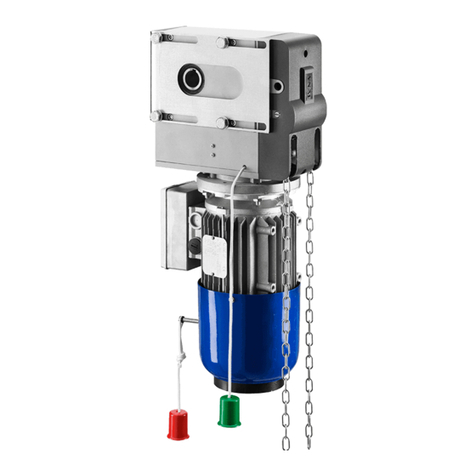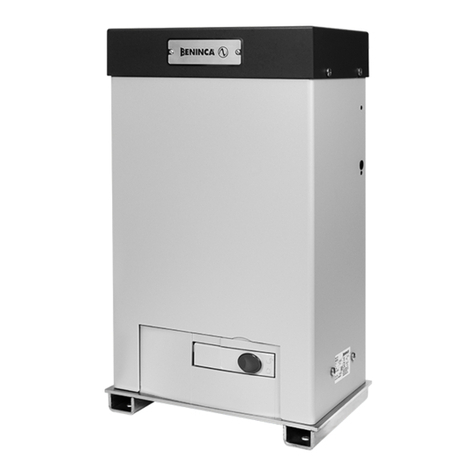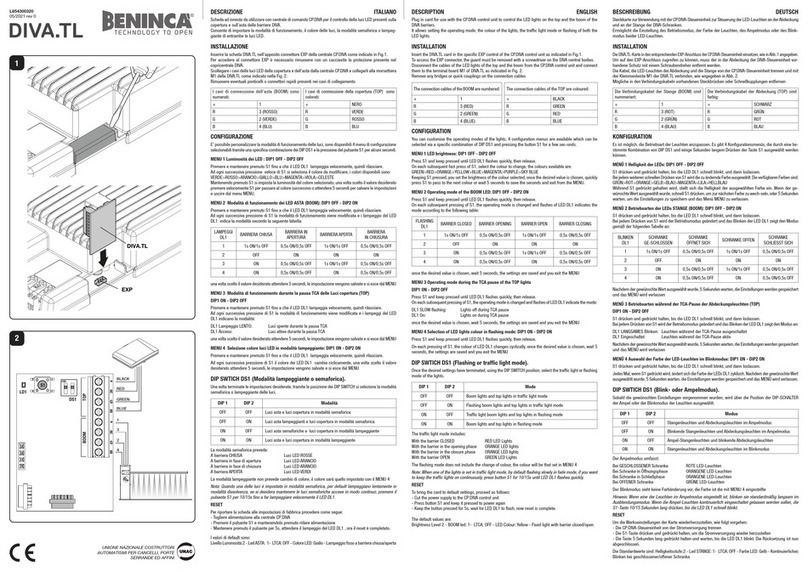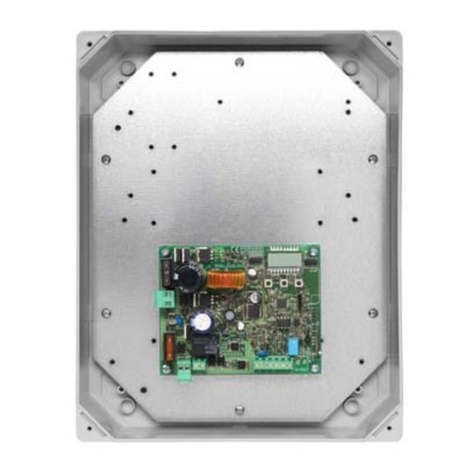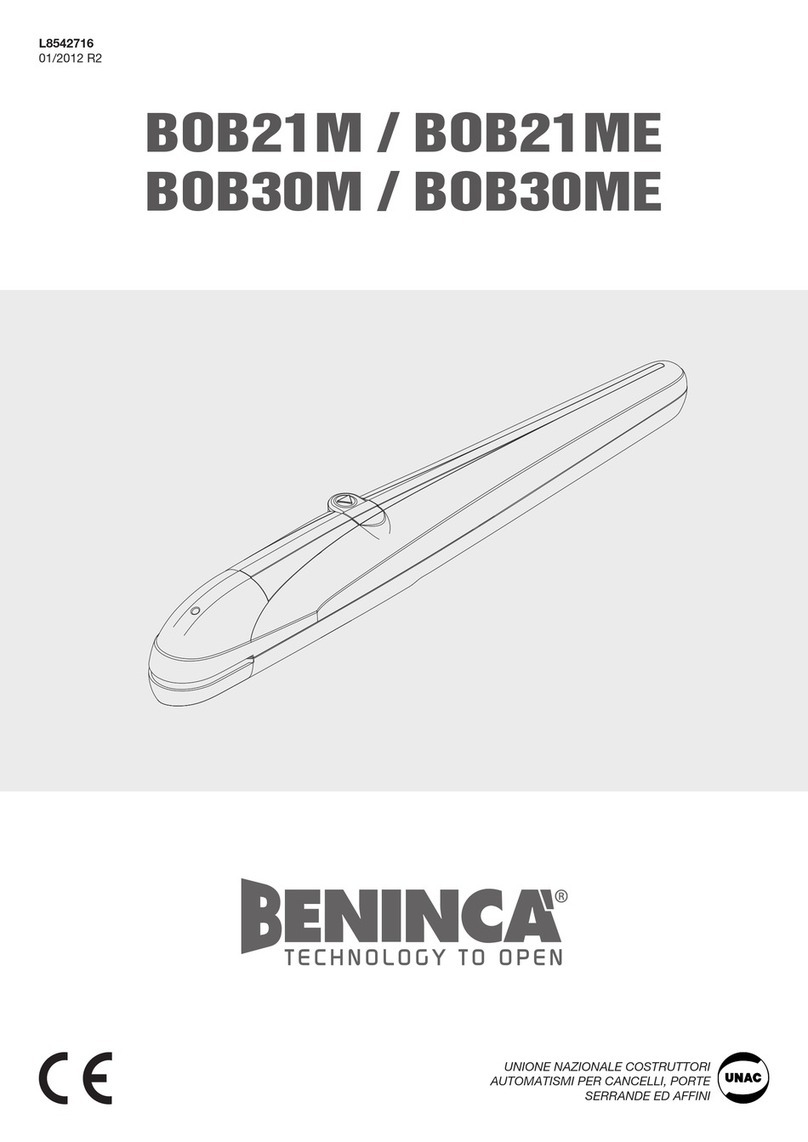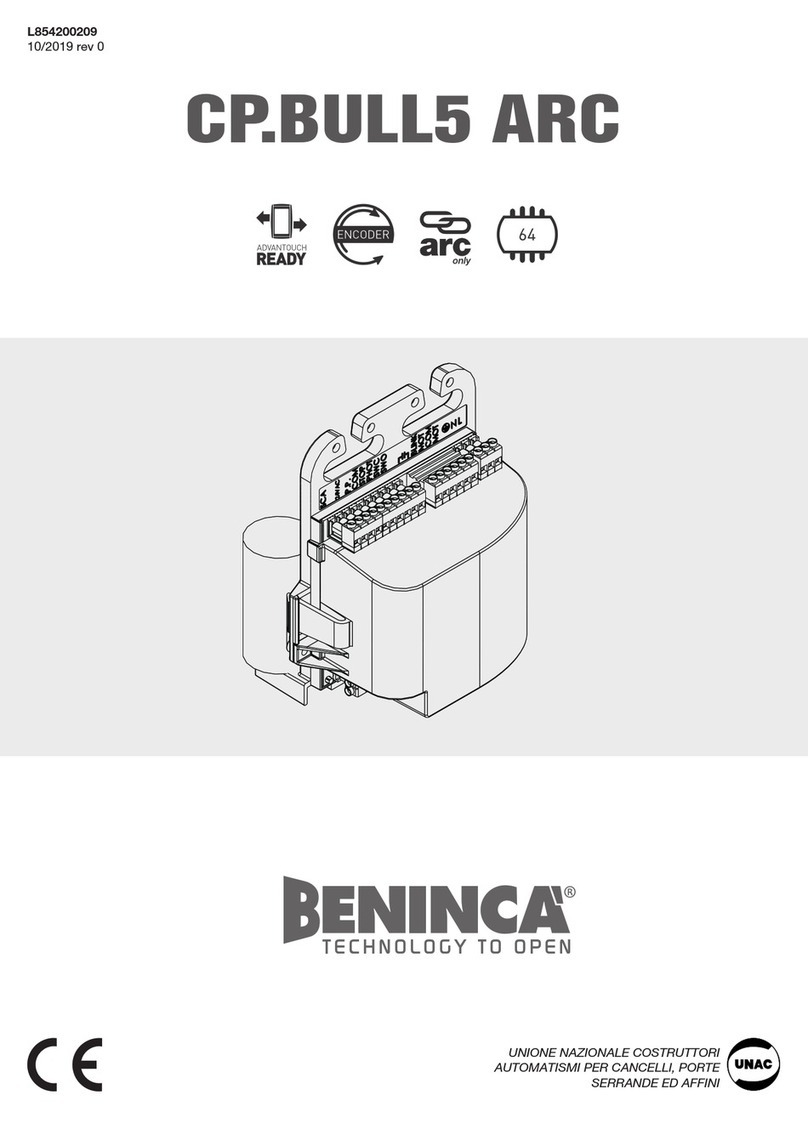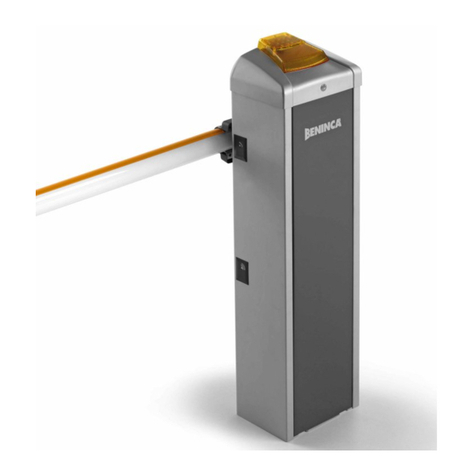9
Introduzione
t1SJNBEJQSPDFEFSFBMMJOTUBMMB[JPOFMFHHFSFMFistruzioni qui riportate.
tµGBUUPEJWJFUPBTTPMVUPEJVUJMJ[[BSFJMQSPEPUUPBOB per applicazioni diverse da quelle contem-
plate dalle presenti istruzioni.
t*TUSVJSFMVUJMJ[[BUPSFBMMVTPEFMMJNQJBOUPt
Consegnare all’utilizzatore le istruzioni ad esso rivol-
te.
t5VUUJJQSPEPUUJ#FOJODËTPOPDPQFSUJEBQPMJ[[BBT-
sicurativa che risponde di eventuali danni a cose o
persone causati da difetti di fabbricazione, richie-
de però la marcatura CE della ”macchina” e l’uti-
lizzo di componenti originali Benincà.
Notizie generali
Per un buon funzionamento delle automazioni in og-
getto, il cancello da automatizzare dovrà rispondere
alle seguenti caratteristiche:
- buona robustezza e rigidità.
- le cerniere devono presentare giochi minimi e per-
mettere che le manovre manuali siano dolci e re-
golari.
- in posizione di chiusura le ante devono combacia-
re fra loro per tutta l’altezza.
Non essendo l'attuatore provvisto di finecorsa elettro-
magnetici, è indispensabile predisporre nel cancello
da automatizzare degli arresti meccanici in chiusura
ed apertura. (fig.1)
Messa in posa dell’automatismo
Stabilire l’altezza dal suolo dell’automatismo (si con-
siglia il più centrato possibile rispetto al portone ed in
corrispondenza di un solido traverso). Saldare quindi
la piastra P rispettando le quote di fig. 2.
Con il portone in chiusura, saldare la staffa S rispettan-
do la quota di fig. 2, ad un traverso del portone o ad
altro elemento adeguatamente robusto; tener presente
che in questa condizione l'attuatore non deve essere
totalmente a fine corsa.
Rimuovere il coperchio di protezione C svitando la vite
F, quindi fissare l’attuatore alla piastra P tramite la vite
T, la rondella L ed il dado D (fig. 3).
Bloccare infine l’attuatore alla piastra S tramite la vite
V e la rondella R.
Le forature presenti nell'attuatore (fig.2A), agevolano il
rispetto delle quote di installazione ottimali.
Le staffe di fissaggio regolabili, disponibili su richiesta,
consentono una più ampia possibilità di adattamento
dell'attuatore alle diverse condizioni di installazione,
evitando inoltre il taglio e la saldatura delle staffe fornite
in dotazione.
Regolazione fermi meccanici
L’attuatore è provvisto di fermi meccanici regolabili in
apertura e chiusura. La regolazione si effettua posizio-
nando opportunamente i blocchi meccanici “Open” e
“Close”, come indicato di seguito (fig. 2):
1) Sbloccare l’automazione, utilizzando l’apposita
leva di sblocco, come indicato nelle istruzioni per
l’utilizzatore.
2) Portare l’anta nella posizione di chiusura.
3) Allentare le viti V1 e muovere il blocco “Close” fino a
portarlo in battuta sul perno “P”, fissare le viti V1.
4) Portare l’anta nella posizione di apertura.
5) Allentare le viti V2 e muovere il blocco “Open” fino
a portarlo in battuta sul perno “P”, fissare le viti
V2.
6) Rispristinare il funzionamento automatico.
Collegamenti
L’apposita piastrina P (fig. 5) consente l’utilizzo di rac-
cordo per guaina o pressacavo PG11 oppure PG13,5.
Una volta applicato il tipo di pressacavo scelto alla
piastrina, fissare quest’ultima al carter riduttore tramite
le viti V.
ATTENZIONE
La polizza RC prodotti, che risponde di eventuali danni
a cose o persone causati da difetti di fabbricazione,
richiede la conformità dell’impianto alla normativa vi-
gente e l’utilizzo di accessori originali Benincà.
DATI TECNICI
BOB2124
BOB2124 E BOB3024
BOB3024 E
Alimentazione 24Vdc
Assorbimento 5,5 A
Spinta 1800 N
Intermittenza di lavoro Intensivo
Grado di protezione IP44
Temp. funzionamento -20°C / +50°C
Corsa utile:
- con 2 fermi meccanici
- senza fermi meccanici
270 mm
325 mm
Rumorosità <70 dB
Lubrificazione Permanent
grease
Peso 8,2 kg 8,2 kg






